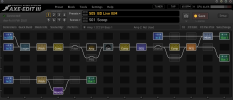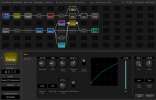dannyp64
Member
Can we discuss Compression? I find it is the magic that makes a tone sound full and professional.
Couple of thoughts…
1. I use one right after the “In” block in front of all other blocks, but is anyone using one at the end of their chain instead and feel it’s the way to go?
2. Is anyone using two compressors in their chain? One at the beginning of their block chain and one at the end of it? If so, how are you setting up your compressor parameters?
3. I’ve been searching long and hard for someone to walkthrough how compression parameters change the tone of a guitar. I see a ton out there describing how compressors work but nothing from someone who takes the time to actually walk through each dial and allow us to hear how each dial is affecting the tone. Does anyone know of a good place to find someone walking through compression dials on YouTube? So I can hear what each dial is doing…
4. I know the distressor is a popular compression that apparently “colors” the sound in a magical way. Has anyone figured out a compressor in the Fractal world that compares to the Distressor? Which one, and how are you setting the dials?
5. Not sure what else
Couple of thoughts…
1. I use one right after the “In” block in front of all other blocks, but is anyone using one at the end of their chain instead and feel it’s the way to go?
2. Is anyone using two compressors in their chain? One at the beginning of their block chain and one at the end of it? If so, how are you setting up your compressor parameters?
3. I’ve been searching long and hard for someone to walkthrough how compression parameters change the tone of a guitar. I see a ton out there describing how compressors work but nothing from someone who takes the time to actually walk through each dial and allow us to hear how each dial is affecting the tone. Does anyone know of a good place to find someone walking through compression dials on YouTube? So I can hear what each dial is doing…
4. I know the distressor is a popular compression that apparently “colors” the sound in a magical way. Has anyone figured out a compressor in the Fractal world that compares to the Distressor? Which one, and how are you setting the dials?
5. Not sure what else


